
The Plant Guide: Full Sun Plants
Published: 20/01/2023 | Updated: 05/05/2023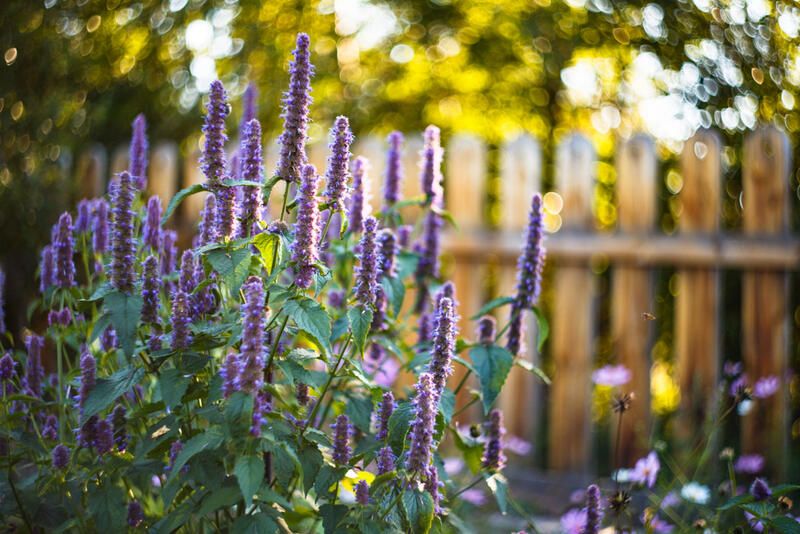
There's something about gardening in warmer climates that just feels different. From the sun hitting your face to the struggles of trying to find plants that work with your dry weather or full sunlight-filled yard. Now we all love some sun but direct sunlight on your plants 24/7 can cause some problems especially if you don't have the right plants for your yard.


If you’re looking for full-sun plants that don’t need much maintenance, you’ve come to the right place. A sunny outdoor space can be a blessing as most flowering garden plant species need full sun to thrive. However, add intense heat to the sun and it can become difficult to keep plants alive. Fortunately, some plants have evolved to tolerate both direct sun and heat, for weeks or even months at a time.
You've come to the right place if you're seeking for low-maintenance full sun plants. Given that most flowering garden plant species require full sun to develop, a sunny outdoor area might be a blessing. However, it might be challenging to maintain plants when light is combined with high heat. Fortunately, some plants have evolved to stand prolonged periods of heat and direct sunlight.
These plants will do very well planted in sunny garden borders, in raised beds, or next to sunny walls. Best of all, you won’t need to worry about keeping them alive. All of these are recommended by professional gardeners with experience in growing plants in hot and arid climates. Let's get started and look at some sun-loving plants!
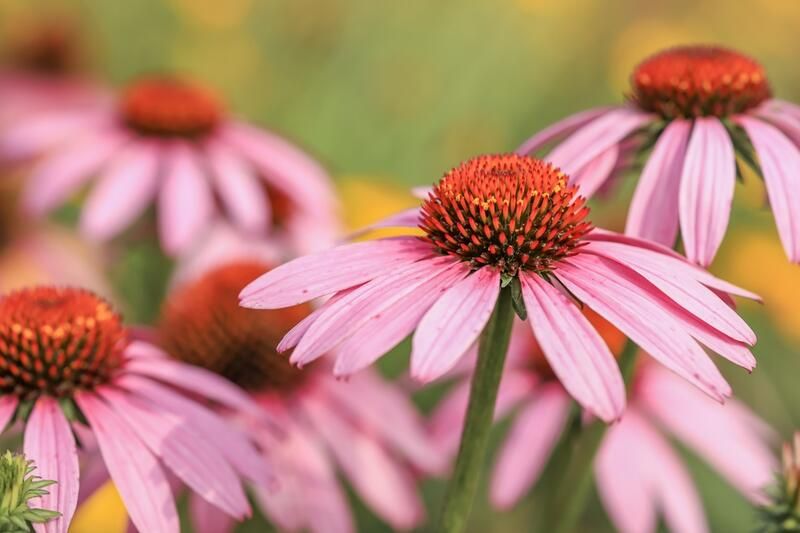
Figuring Out Your Climate
The first step in picking plants out for any yard regardless of where you live is double and triple checking your climate.
This can be done in several ways, but the easiest way is through the USDA hardiness zones scale. The USDA zones are zones that have been numbered based on climate, soil type, and overall weather. Super easy to go through and once you have it figured it you can check where every single plant can thrive in the US. If you live outside the US, try and locate your governmental climate chart.
Drought Tolerant Plants
These drought-tolerant plants continue to thrive even when the rain stops. They can withstand arid circumstances and enrich your yard with color and texture.
-
Coneflower (Zones 3-9)
-
Catmint (Zones 3-8)
-
Agastache (Zones 5-11)
-
Veronica (Zones 3-9)
-
Artemisia (Zones 3-8)
-
Russian Sage (Zones 4-9)
-
Lavender (Zones 5-10)
-
Lantana (Annual Zone 8)
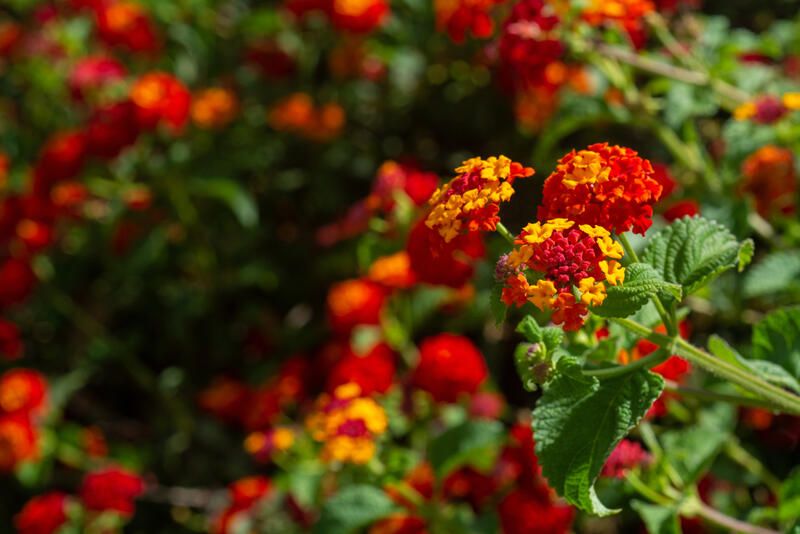
Full Sun Plants for Borders
Flowers that thrive in direct sunlight are frequently found in sunny borders. In general, it's preferable to stay with native plantings when selecting plants for full-sun regions. These plants have the best chance of success because they are ideally adapted to your region and climate. However, you can also choose plants with similar environmental requirements for growth, such as those for water, light, and soil in your location.
The following full-sun border plants are suitable for most climates and locations:
-
Sedum (Zones 3-11)
-
Daylily (Zones 4-9)
-
Russian Sage (Zones 4-9)
-
Blanket Flower (Zones 3-9)
-
Purple Coneflower (Zones 3-9)
-
Aster (Zones 3-8)
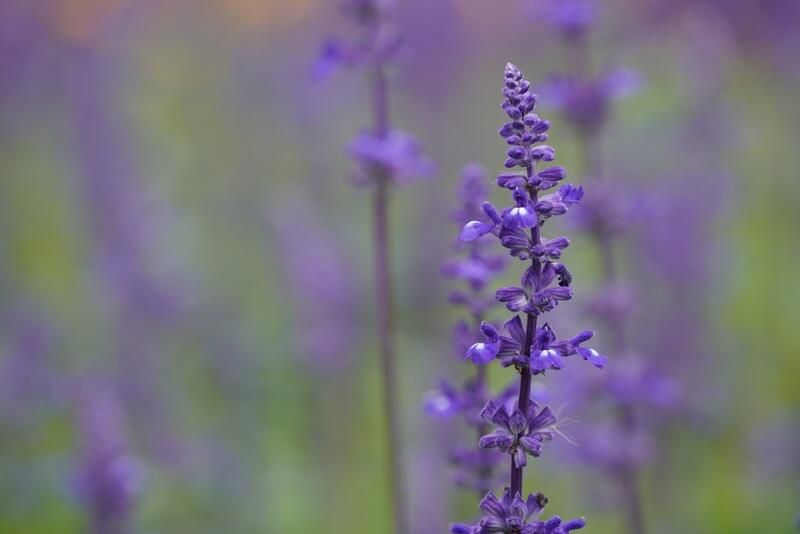
Full Sun Perennial Plants
Many perennial plants may survive in dry, arid environments with full sun. Most of these perennials are low maintenance and many of them may be grown in containers. Match your perennials' growing requirements to those of your region to get the most out of them, especially if you're growing them in pots, which calls for drought-tolerant plants.
The most popular options for full-sun perennials in containers include the following:
-
Lambs Ear (Zones 4-8)
-
Hibiscus Rosa Sinensis (Zones 10-12)
-
Lavender (Zones 5-10)
-
Shasta Daisy (Zones 4-9)
-
Miniature Roses (Zones 4-11)
-
Sempervivum (Zones 3-8)
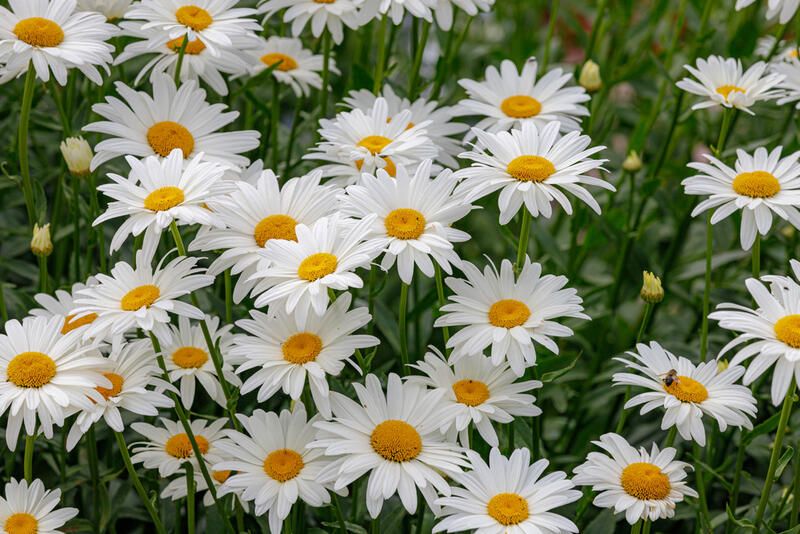
Annual Flowers
Numerous annuals are excellent alternatives for sunny locations and container gardens. They work well to close gaps inside boundaries that receive plenty of sunlight. The majority of full-sun annuals are acclimated to drought-like conditions, making them suitable for these kinds of locations.
Here are some of our favorites:
-
Petunia (Zones 9-11)
-
Salvia (Zones 5-9)
-
Moss Rose (Zones 10-11)
-
Marigold (Zones 2-11)
-
Geranium (Zones 3-9)
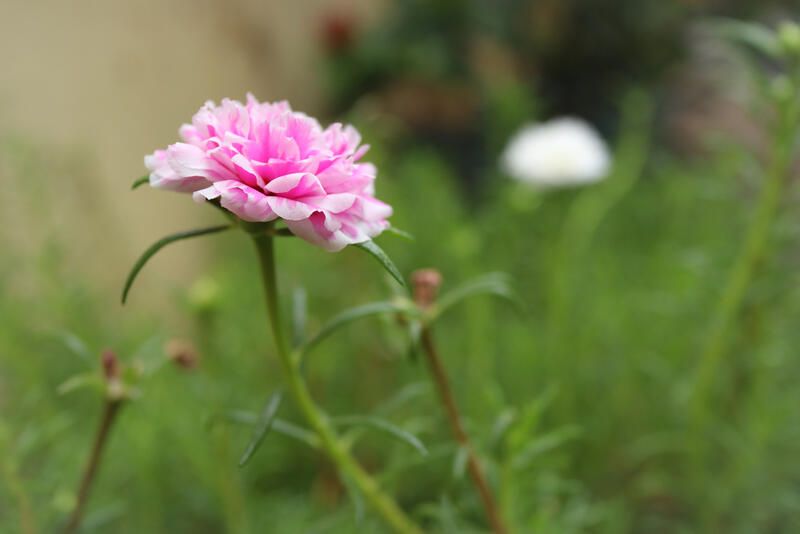
Our Favorite Plant Picks & All About Them
Coneflowers
Echinacea, sometimes known as coneflower, has long been a favorite in sunny gardens. Its vibrant summer blossoms 'give a great shock of color to the garden. It's the ideal choice for a sunny garden and, once established, needs minimal upkeep. Coneflowers are well-known for their therapeutic benefits; the dried flowers can be used to make an herbal infusion that strengthens the immune system.
Coneflowers typically self-sow and require little maintenance. These drought-tolerant plants may grow in nearly any soil type as long as the drainage is good. Coneflowers also attract butterflies and birds.
Jade Plant
The jade plant is a succulent that can be cultivated effectively outdoors, even though you may know it as one of the best interior plants. What's best? It can be grown on the side of your backyard that receives the majority of the day's shade as long as it receives about three hours of sun every day.
Hibiscus Rosa Sinensis
Hibiscus is widespread in the Mediterranean region, for good reason, and may thrive for months without receiving any moisture while growing in full sunlight and producing stunning bright red or pink flowers. Hibiscus needs 6 to 8 hours per day of direct sunshine to thrive and must be grown in full sun. It is ideal for beginners as well because it is an easy-to-care-for plant.
Take a look at tropical hibiscus as well for areas with moist but well-drained soil!
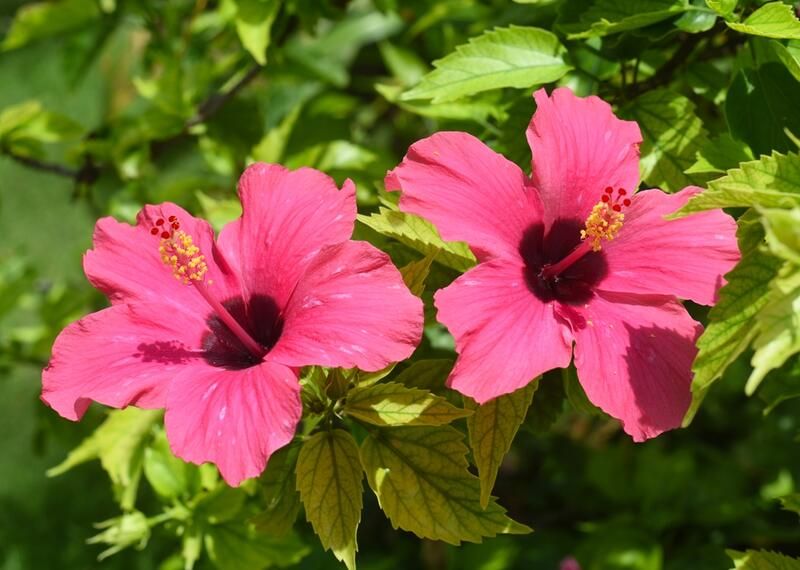
Sedum
One of the best plants to utilize in warm, sunny areas is sedum. They are hardy plants that can survive in practically any environment. Even before the flowers appear, the stems and leaves have a wonderfully intriguing appearance that is remarkable. Sedum can withstand drought and looks beautiful in containers, garden beds, and along sunny paths.
Catmint
These drought-tolerant plants are ideal for borders, rock gardens, and pots and have fragrant blossoms that attract butterflies and bees. Catmint has plants that are 1 to 3 feet tall and wide, and it blooms from early summer to early fall. Look into other perennial blooms to draw pollinators.
Yarrow
A fantastic choice for hot, dry gardens is yarrow. It is a well-known favorite of butterflies and has flat-topped flowers that bloom in late spring to late summer. Additionally, Yarrow is resistant to deer, which is advantageous if you live in a rural location where deer are abundant. Yarrow comes in a variety of vibrant hues, including yellow, red, and pink.
Lantana
It is worth a try if you have never planted lantana and live in a hot, sunny climate. Lantana is frequently mentioned as one of the favorites since it thrives in hot, humid conditions and does best in moist, well-draining soil. Additionally, it can resist dry circumstances. Lantana "loves" the hot afternoon sun, unlike many other plants that become burnt by it, and will bloom all year to create clusters of pink, yellow, orange flowers, white, or red blooms. Because they attract pollinators like bees, hummingbirds, and butterflies, they work well planted along the perimeter of a vegetable garden.
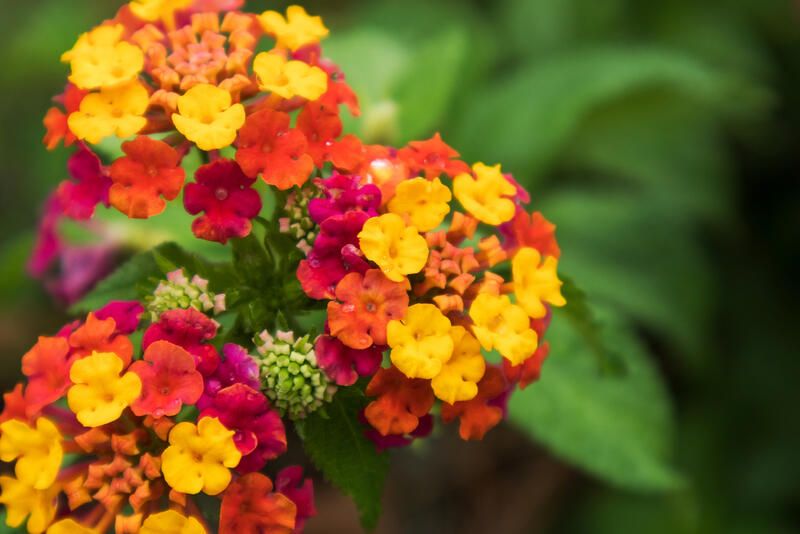
Licorice Plant
The silvery, fuzzy leaf of the licorice plant can trail and easily tangle with the nearby vegetation. This drought-resistant vine extends out to a height of 6 feet and thrives in both partial shade and full sun.
Veronica
This popular, simple-to-grow plant, sometimes known as speedwell, has a long bloom duration and stunning white, purple, pink, or blue spikes. These 1- to 2-foot-tall drought-tolerant plants do best in full sun and well-drained soil.
Portulaca
These annual plants are a dependable source of vibrant color and require little maintenance. Portulaca thrives in hot, sunny places where other flowers could wither. It grows in low clusters and blooms in a rainbow of colors. You must understand the distinction between annuals and perennials if you are new to gardening.
Salvia
This tall, drought-tolerant flowering plant stands out in any landscape and adds color throughout the entire growing season. Columns with vivid colors stand 8 to 30 inches tall. These summer-to-fall bloomers look stunning in containers as well.
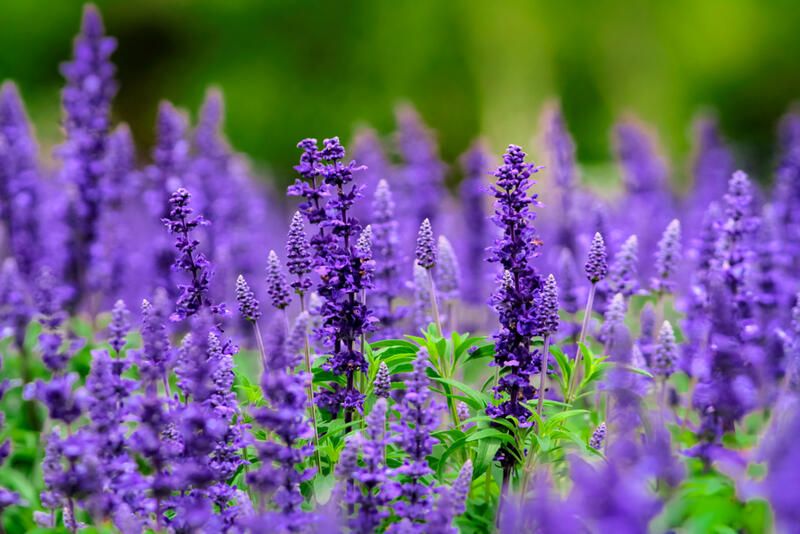
Marigold
Everyone should grow marigolds in full sun for their vibrant color because they thrive there, work well in pots or as bedding plants, are simple to grow, and bloom in the summer and fall when other plants are beginning to wither. They must get full light and soil that drains properly, and you must thoroughly water them at the root zone.
California Poppy
California poppies are the perfect solution if your yard isn't the most productive. Although they do not mind having poor soil, these drought-resistant plants do thrive best in full light.
Cosmos
Cosmos is the one for you if you want something with a lot of vivid punch. It features "very showy, towering annuals with silky daisy-like blossoms." Cosmos, a plant native to Mexico, can withstand heat and dryness. Even in regions with poor soil, as part of a desert garden, or for xeriscaping, it can be planted. Cosmos flowers "really don't appreciate too rich soil as it makes them floppy and weak-stemmed," according to Stark. Any neglected bed will benefit greatly from their vibrant injection, and they blossom with little to no maintenance.
Artemisia
Reliable artemisia is prized for its lovely, delicate, grey to silver leaves that grow on tall, arching stems or in low mounds that are 1 to 5 feet high and wide. These hardy, trouble-free plants can withstand drought.

Dahlia
Zones 8 to 11 are often ideal for dahlia growth. They prefer full sun, although as with other plants if you reside in an area of the country that gets hot, you should attempt to give them some afternoon shade.
Bee Balm
Bee balm is the ideal flower if you want to brighten up your yard and attract birds, bees, and butterflies. It thrives in full light and grows best in Zones 4 to 9.
Canna
Canna is the best choice if you want stunning leaves and lovely flowers. It flourishes in USDA Zones 8 to 12 because it enjoys the heat and sunlight.
Peony
In late spring, this fast-growing shrub plant with glossy, dark green foliage bears voluminous, fragrant blooms. They won't bloom if you plant them too deeply. Since they are consuming the nectar, the ants that visit the blossoms are not a nuisance.
Try these varieties: Maxima Festiva and Sarah Bernhardt
Columbine
In late spring to early summer, these lovely, elegant flowers bloom for weeks. The plants usually only live for a few years, but they frequently release seeds that grow into new, tiny plants.
Try the following varieties: White, Swan Burgundy, and Lime Sorbet
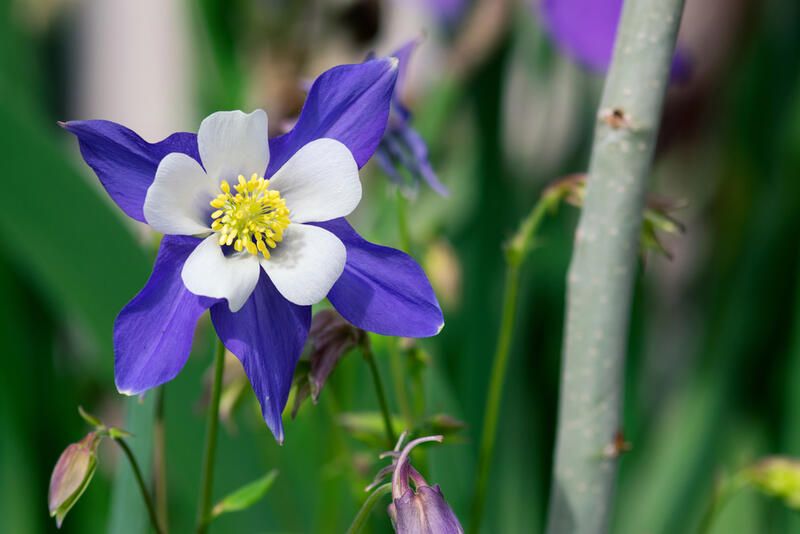
Chrysanthemum
You may adore a type in every shade of the rainbow. The real sting, though, is that you must plant mums in the spring if you want them to return each year. The majority of people plant in the fall, which prevents the plants from establishing themselves in time to last the winter.
Try these varieties: Matchsticks and Hillside Sheffield Pink flowers
Perennial Herbs
Except for annual pruning, many drought-tolerant herbs flourish in full sun. They are the exact opposite of herbs with sensitive leaves, like basil and parsley. Many herbs flourish in hot, dry climates, and the majority of them like solitude. In hot heat and poor soil, thyme, rosemary, and sage thrive. Sage comes in a variety of delicious and attractive kinds, while rosemary is a terrific - and underutilized - herb garden plant for hedges and green fence ideas.
Verbena
Given that bees adore the flowering kinds of verbena, it is quite beneficial to put it in a wildlife garden. Purple-flowering verbena is highly advised since it 'does well in dry situations.
Lavender
Given that the aromatic plant is indigenous to the Mediterranean and the Middle East, it is not surprising that it can withstand dryness. The plant mounds form lovely specimens or borders.
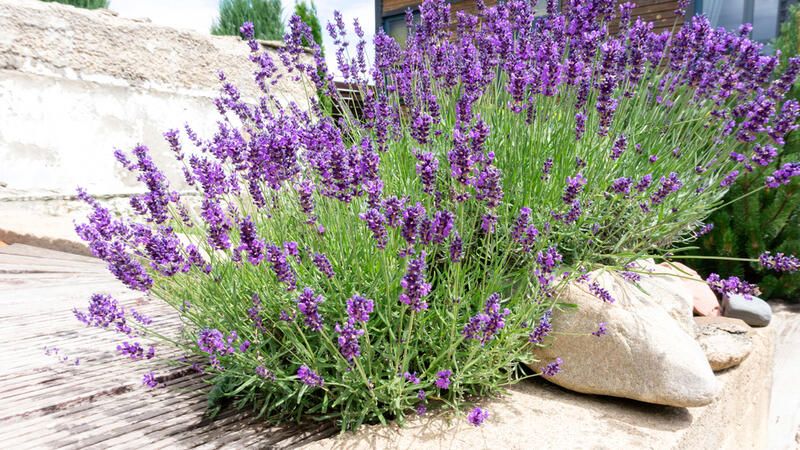
Russian Sage
Russian sage is a true garden warrior with 2- to 5-foot stems that are of various colors of purple and blue. It can withstand cold, drought, and bad soil. It won't let you down as long as you grow it in a sunny location.
Perennial Poppies
These striking, dancing flowers bloom for a few weeks around the beginning of summer. It is recommended to put them in groups. Make sure the variety you purchase is perennial because some poppies are annuals and won't grow back from the roots (which are grown from seed).
Try these varieties: Goliath and Forncett Summer
Lambs Ear
Tall spiky flowers on fuzzy, silvery plants make a statement. The velvety, woolly leaves are the real stars, while the flowers are very interesting.
Try these varieties: Big Ears with Silver Carpet
Hollyhock
On 3 to 10-foot-tall spikes, these traditional cottage garden flowers have vibrant color and a stunning presence. They flower in the middle of the summer, and some kinds require staking to remain erect.
Try these varieties: Henry VIII, Chaters Pink flowers
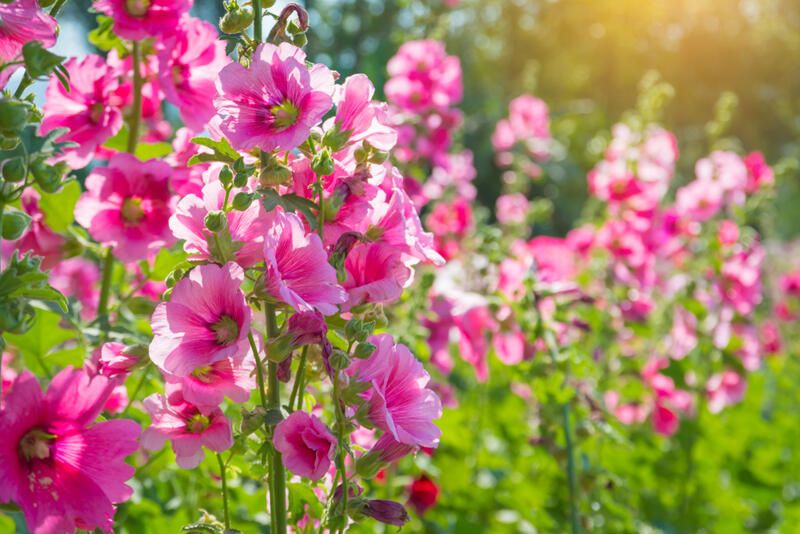
Agastache
Even though it can be a little difficult to grow, pollinators adore this plant. From early through midsummer, they blossom.
Try these varieties: Arizona, Ava Sunrise
Dianthus
Due to the fringed flower petals that are like they were cut with pinking shears, this low-growing plant with a perfume that is similar to vanilla or spicy is frequently referred to as "pinks." In the late spring, they bloom.
Try the Paint the Town Fuchsia and Georgia Peach Pie varieties.
What to Avoid?
While many plants thrive in full sunlight and may grow in a sunny location with little care, not all are simple to maintain. We advise gardeners to stay clear of wisteria. The vining branches are quite robust and can eventually cause harm to Arbours and gazebos, even though it produces lovely blooms.
As their name implies, hydrangeas require a lot of water to survive and detest the scorching afternoon sun, so we'll add them to the list of plants that should be avoided at all costs in a hot, sunny landscape. Avoid at all costs.
Get to Planting!
Full sun plants need not be problematic. You should be rewarded with lovely flowers and foliage if you pick the varieties that grow well in your region and can withstand heat and drought. Try growing a variety of plants that bloom at different times in your pots to add seasonal interest and ensure there is always something in bloom.


